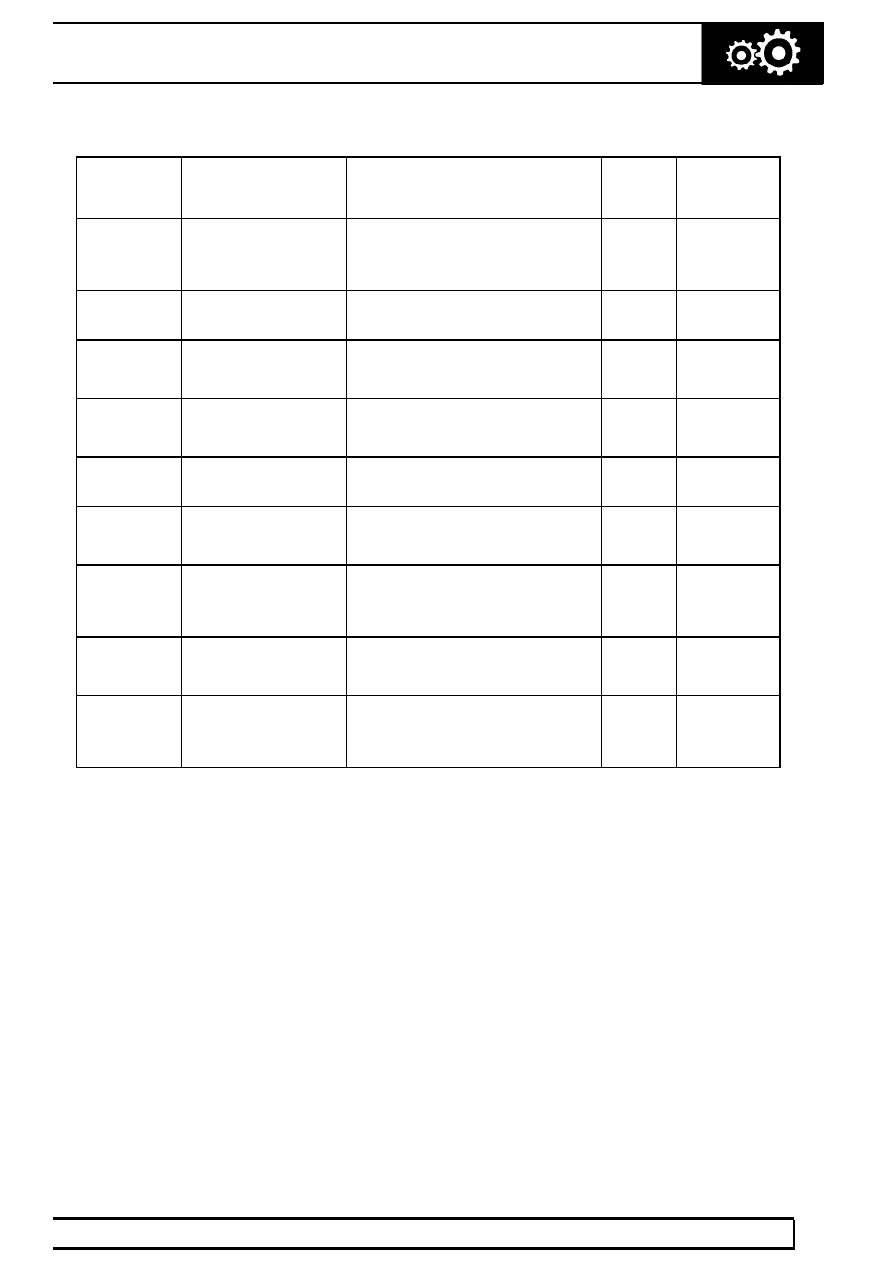Range Rover. Manual - part 156

ZF AUTO
25
DESCRIPTION AND OPERATION
Fault effects and warning indicators - Petrol vehicles from 99MY (continued)
Fault code
OBDll
(TestBook)
Fault description
Effect
MIL
Warning
lamp
’GEARBOX
FAULT’
message
P1843
(17)
* CAN time-out
monitoring
Maintains current gear in low range,
limp home mode in high range. Shift
pressure to maximum, harsh gear
shifts/engagement.
On
Yes
P1884
(11)
* CAN message:
Engine friction invalid
No apparent effect.
On
No
P1884
(18)
* CAN message:
Throttle position
invalid
Substitute throttle angle of 50%
adopted. No kickdown. Operates in
Economy mode only.
On
Yes
P1884
(19)
CAN message:
Engine temperature
invalid
Substitute engine temperature
derived from other inputs. No
apparent effect.
On
No
P1884
(20)
CAN message: Road
speed invalid
No apparent effect.
On
No
P1884
(33, 34)
CAN message:
Engine torque invalid
Substitute engine torque derived
from other inputs. May affect shift
quality.
On
No
P1884
(35)
CAN message:
Engine speed invalid
Maintains current gear in low range,
limp home mode in high range. Shift
pressure to maximum, harsh gear
shifts/engagement.
On
Yes
P1884
(37)
CAN message:
Engine air intake
temperature invalid
No apparent effect
On
No
P1884
(38)
Altitude shift control
invalid
No reduced torque compensation,
possible reduction in
performance/driveability at altitude
or high ambient temperatures.
On
No
*= Emissions (OBDll) relevant
†= MIL illuminates immediately (in all other faults, MIL on illuminates in the 2nd consecutive drive cycle if the fault
is still present)